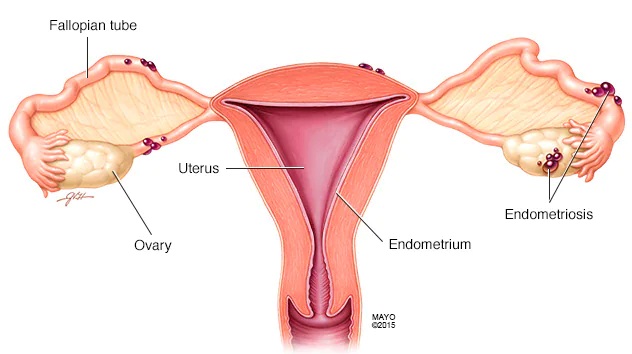TLI Staff
New Delhi: Endometriosis that involves ovaries, fallopian tubes and the tissue lining the pelvis, is a painful disorder in which tissue similar to the tissue that normally lines the inside of your uterus grows outside your uterus. The primary symptom of endometriosis is pelvic pain, often associated with menstrual periods. There are many women who are asymptomatic too. Timely diagnosis, treatment, and knowledge about the disease can help manage the disease.
Dr Abhishek Mangeshikar, Consultant Laparoscopic and Robotic Gynaecologist, ACI Cumball Hill Hospital, says Endometriosis affects girls and women of reproductive age and is attached to any organ associated with reproduction. It can be described as an abnormal growth of tissues resembling the uterine lining outside the uterus. The cause of endometriosis is unknown although there are many theories.
Symptoms of Endometriosis
The common symptoms are intense pelvic pain, infertility, long menstrual cycles, nausea, or vomiting.
- Painful menstruation
- Cramping
- Painful sex
- Constipation
- Loose motions
- Bloating
- Back pain
- Leg pain
- Pain while urinating
- Pain while passing stools
- Rectal bleeding
“The main reason why women should be aware of endometriosis is that the disease is quite common and not rare. It affects more women than breast cancer. Many have not heard of it and the disease has not got the attention it deserves typically because it is not terminal. Many women may complain of excessive pain during periods, it is mistaken to be normal and they are asked to be stronger due to the lack of awareness,” said Dr Mangeshikar.
Stages of Endometriosis
Here are the different stages of Endometriosis according to Dr. Mangeshikar:
Stage I: The patient may have small adhesions and small amounts of endometriosis tissue on an ovary. It may also include inflammation in or around the pelvic area.
Stage II: There are more adhesions on or around the ovaries. These adhesions are defined to be “too insignificant” at this stage and are usually too small to be picked up on ultrasound unless the doctor pays attention to probe tenderness in the region while examining the ovary.
Stage III: It is moderate where adhesions will be blatantly obvious and usually, there may be cysts on the ovaries. There may be growths in other areas of the pelvis blurring into the territory of stage 4 endometriosis.
Stage IV: It is the final stage associated with a large number of cysts and severe adhesions. Most of the cysts will appear on the ovaries while the adhesions will appear over the pelvic lining and may affect the fallopian tubes and bowels. This can make bowel movements terribly uncomfortable and period pain the absolute worst.
Treatment during lockdown
Patients arrive one day prior to their surgery and are admitted to the hospital directly to avoid unnecessary hotel stays.
The pre-op counseling, diagnosis, and surgical planning are all done via virtual consultations where the patients’ MRI imaging can be screen shared and they can explain their diagnosis very well.
It’s almost like the real thing. The patient is discharged usually with 24 – 72 hours depending on their recovery and complexity of the surgery and they fly home directly after being discharged from the hospital.
Endometriosis needs its own subspecialty and advanced disease is outside the realm of routine OBGY practice and must be dealt with by specialized endometriosis centers.
Surgery needs to be done by a well-trained, well-coordinated team of specialists and treatments need to be tailored toward the patient and not just towards the disease. Every case is different and treatment has to be tailored.

